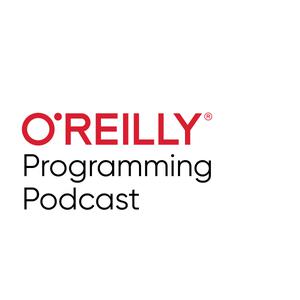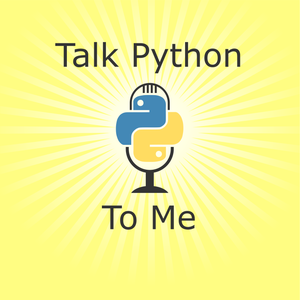
O'Reilly Programming Podcast - O'Reilly Media Podcast
O'Reilly Media
Helping software developers, engineers, and architects get their projects done better and faster.
- 49 minutes 2 secondsKyle Simpson and Tammy Everts on the challenges of the modern web
The O’Reilly Programming Podcast: Rising barriers to entry, the complexity of the modern web, and a preview of upcoming Fluent sessions.
In this episode of the O’Reilly Programming Podcast, I talk with two of the program chairs for the upcoming O’Reilly Fluent Conference (July 11-14 in San Jose), Kyle Simpson and Tammy Everts. Simpson is co-author of the HTML 5 Cookbook, and the author of the You Don’t Know JS series of books. Everts is the chief experience officer at SpeedCurve and the author of Time is Money: The Business Value of Web Performance.
Discussion points:
- Simpson says that one of the biggest challenges facing JavaScript developers is that the previously low barrier to entry has been raised significantly: “JavaScript developers are facing a monumental task of juggling a vast ecosystem of tools and processes that go around, and on top of, and in front of, what used to just be opening a text file and typing JavaScript.”
- Everts talks about the challenges of designing for the modern web: “The web has become so complex, and the user base and the types of devices and bandwidths that people are experiencing are so incredibly diverse,” she says. “Developers and designers are somehow magically expected to take all these assets, all these scripts and make them perform reliably and consistently on everything from a smartphone over a 2G connection to someone who has blazingly fast internet.”
- Simpson and Everts preview numerous Fluent sessions and presentations.
Other links:
- Everts’ recent O’Reilly blog post “Building for the modern web is really, really hard”
- Simpson’s free ebook JavaScript and HTML5 Now
- Everts co-curates WPO Stats, a collection of performance case studies
- Redux, the open source JavaScript library often used with the React JavaScript library
- The W3C’s list of web accessibility evaluation tools
- Simpson's recent post Fluent: Trainings To Further The Web
5 April 2018, 1:10 pm - 25 minutes 42 secondsRebecca Parsons on evolutionary architecture
The O’Reilly Programming Podcast: How to build evolvable systems.
In this episode of the O’Reilly Programming Podcast, I talk with Rebecca Parsons, chief technology officer at ThoughtWorks. She will be leading the workshop Building Evolutionary Architectures Hands-On at the O’Reilly Open Source Convention (OSCON), July 16-19, 2018, in Portland, Oregon. Parsons also is co-author (with Neal Ford and Patrick Kua) of the book Building Evolutionary Architectures.
Discussion points:
- The shift in focus to evolvability rather than predictability: “When you look at the way the technology landscape is changing,” Parsons says, “trying to say you can predict any kind of technology roadmap is simply impractical.”
- Why evolutionary systems need to be easy to understand: “How easy it is to change an architecture directly correlates with how easy it is to understand what’s happening in the system,” she says.
- The role of fitness functions: “Fitness functions are defining what outcomes we want the architecture to achieve,” Parsons says. “Fitness functions guide our decisions about how we are going to evolve the architecture.”
- An advocate for diversity in the technology industry, Parsons talks about groups she has worked with, including CodeChix and Women Who Code, and the issues that women in the field continue to face. “The climate and culture in the tech industry is still not a comfortable place for women to be,” she says. “We would like to believe as an industry that we’re a meritocracy, but we’re not. Part of the problem we’re dealing with is that women leave at a significantly greater rate than men do. We can double the number of women who come in, but if they’re leaving at a faster rate, we’re not going to make progress.”
Other links:
- Video of Parsons’ presentation The evolution of evolutionary architectures at the 2016 O’Reilly Software Architecture Conference
- Parsons praises the work of other groups working to increase diversity, including Black Girls Code and AnitaB.org
22 March 2018, 12:25 pm - 21 minutes 34 secondsBridget Kromhout on Kubernetes
The O’Reilly Programming Podcast: Containers, orchestrators, and new projects.
In this episode of the O’Reilly Programming Podcast, I talk about Kubernetes, containers, and more with Bridget Kromhout, a principal cloud developer advocate at Microsoft, and a frequent speaker at tech conferences. She will be leading the workshop Kubernetes 101 at the O’Reilly Velocity Conference in San Jose, June 11-14, 2018, and at the O’Reilly Open Source Convention (OSCON), July 16-19, 2018.
Discussion points:
- The role that Docker played in popularizing containers. “Docker democratized containers and made them more available so that it increased adoption significantly,” Kromhout says. “You didn’t need to be a kernel expert; you could use containers as a developer without needing to focus on kernel features.”
- The main parts of a Kubernetes architecture, including the master and nodes, and a look at a Kubernetes cluster
- Some open source projects that are making Kubernetes easier to use, including kubicorn, which makes it possible to manage clusters across clouds.
- Kromhout’s work as the lead organizer for devopsdays, a worldwide series of technical conferences covering software development, IT infrastructure operations, and the intersection between them. “It’s really a powerful mechanism to let people in an area start sharing across organizations, and figuring out where they can learn from each other,” she says.
Other links:
- Kromhout is co-host of the Arrested DevOps podcast.
- Video of Kromhout’s presentation Containers will not fix your broken culture and other hard truths at the 2016 O’Reilly Velocity Conference
- Microsoft’s Azure Container Service (AKS)
- Kubernetes-related projects at heptio, Brigade, Istio, and Honeycomb
- Video of Kromhout’s keynote Computers are easy; people are hard at the 2017 O’Reilly Software Architecture Conference
8 March 2018, 12:30 pm - 28 minutes 47 secondsBrent Laster on Jenkins 2 and Git
The O’Reilly Programming Podcast: Creating and implementing continuous delivery pipelines.
In this episode of the O’Reilly Programming Podcast, I talk about Jenkins 2 and Git with Brent Laster, who presents a number of live online training courses on these topics (including Building a deployment pipeline with Jenkins 2, and Next level Git). Laster will also present the workshop Power Git at the O’Reilly Open Source Convention, July 16-19, 2018, in Portland, Oregon, and he is the author of the forthcoming O’Reilly book Jenkins 2: Up and Running.
Discussion points:
- The benefits of the pipeline-as-code model, introduced in Jenkins 2. Laster calls it “more of a DevOps take on things. It adds a lot more flexibility around creating your pipelines, and allows you to treat them like source code.”
- The differences between continuous integration, continuous delivery, and continuous deployment, the topic of a 2017 report by Laster
- The Groovy-based Jenkins DSL, and Blue Ocean, Jenkins’ visual interface
- Jenkins’ GitHub organization project type, which “really makes it easy to scale up the automatic creation of jobs,” says Laster. “You can point Jenkins at a GitHub organization, and it can go out and look at each project, and then within each project, scan for Jenkinsfile.”
Other links:
- The online training course Migrating Jenkins Environments to Jenkins 2, presented by Laster
- Laster’s book Professional Git
22 February 2018, 12:20 pm - 36 minutes 36 secondsRichard Warburton and Raoul-Gabriel Urma on Java 8 and Reactive Programming
The O’Reilly Programming Podcast: Building reactive applications.
In this episode of the O’Reilly Programming Podcast, I talk with Richard Warburton and Raoul-Gabriel Urma of Iteratr Learning. They are the presenters of a series of O’Reilly Learning Paths, including Getting Started with Reactive Programming and Build Reactive Applications in Java 8. Warburton is the author of Java 8 Lambdas, and Urma is the author of Java 8 in Action.
Discussion points:
- The benefits to developers that came out of the introduction of lambdas and streams in Java 8
- How Akka’s actor model helps in the creation of reactive and asynchronous applications
- Comparing the uses of RxJava versus the Java 8 streams API to develop reactive code
- Warburton’s and Urma’s ideas for preparing the next generation of developers for the requirements of industry, the focus of their forthcoming book Real World Software Development
Other links:
- The Learning Path Build Reactive Applications with RxJava, presented by Warburton and Urma
- The Learning Path Build Reactive Applications with Akka, presented by Warburton and Urma
- The video Programming Actors with Akka, presented by Warburton and Urma
- Warburton has been involved as an organizer in the London Java Community
- Urma is co-founder of Cambridge Spark and the Cambridge Coding Academy
- The schedule for the O’Reilly Software Architecture Conference, February 25-28, 2018, in New York
8 February 2018, 12:05 pm - 29 minutes 31 secondsPaul Bakker and Sander Mak on Java 9 modularity
The O’Reilly Programming Podcast: The Java module system and the “start of a new era.”
In this episode of the O’Reilly Programming Podcast, I talk with Paul Bakker, senior software engineer on the edge developer experience team at Netflix, and Sander Mak, a fellow at Luminis Technologies. They are the authors of the O’Reilly book Java 9 Modularity, in which they call the introduction of the module system to the platform “the start of a new era.”
Discussion points:
- The adoption and usage of the Java 9 module system: “This won’t happen overnight,” Mak says. “The community will see that when they’re creating new applications on top of Java 9, they will definitely be able to reap the benefits from the module system.”
- Factors to consider when making a decision on whether to use the Java 9 module system or OSGi.
- Issues regarding how to modularize existing code.
- Frameworks that support the Java 9 module system: Bakker cites Vert.x, and Mak discusses Spring Framework 5.
- Netflix’s edge architecture, the topic of Bakker’s presentation at the upcoming 2018 Software Architecture Conference.
Other links:
- Bakker’s article “Handling dependency injection using Java 9 modularity”
- Mak’s blog post on what Java library maintainers should do to get ready for the Java 9 module system
- The book Building Modular Cloud Apps with OSGi, by Paul Bakker and Bert Ertman
- Mak’s presentation, Modules or Microservices, at the 2017 O’Reilly Software Architecture Conference
25 January 2018, 12:35 pm - 20 minutes 40 secondsLuciano Ramalho on Python’s features and libraries
The O’Reilly Programming Podcast: A look at some of Python’s valuable, but often overlooked, features.
In this episode of the O’Reilly Programming Podcast, I talk about Python with Luciano Ramalho, technical principal at ThoughtWorks, author of the O’Reilly book Fluent Python, and presenter of the Oriole Fluent Python: The Power of Special Methods.
Discussion points:
- The value of some often-overlooked features of Python, including generators, iterators, and the range() function.
- How Python’s Asyncio module “brought a definition of what the interface should be for an event loop into the core standard library,” says Ramalho.
- Why Ramalho calls pytest his “go-to library for unit testing, and other kinds of testing.”
- Striving to avoid surprises and trying to follow the conventions of the language are two characteristics of what Ramalho describes as a “good Pythonic API.”
- The work of the Python Software Foundation to increase diversity in the Python community.
Other links:
- Ramalho’s presentation Fluent Python: Implementing Intuitive and Productive APIs at OSCON 2016
- IEEE Spectrum article on the top programming languages of 2017
- The Zope web application server written in Python
11 January 2018, 12:25 pm - 29 minutes 23 secondsSam Newman on building microservices
The O’Reilly Programming Podcast: How to effectively make the transition from monoliths to microservices.
In this episode of the O’Reilly Programming Podcast, we revisit our June 2017 conversation with Sam Newman, presenter of the O’Reilly video course The Principles of Microservices and the online training course From Monolith to Microservices. He is also the author of the book Building Microservices: Designing Fine-Grained Systems.
Here are some highlights from the conversation:
Getting started with microservices
If you’re interested in adopting a microservice architecture, start with only one or two services at the beginning. Get them deployed into production, and see if it gives you the outcome you’re looking for.How microservices allow scaling
By breaking apart a monolithic system into individual services, those individual services could be scaled up as required. I could run my pricing engine on multiple separate physical machines, allowing it to handle more load. I could take another part of my system and run it on a smaller machine that doesn’t need as much load.The importance of independent deployability
If you create a systems architecture where you have that characteristic of independent deployability—where you can make a change to a service and deploy that service by itself into a production environment without having to redeploy anything else—so many other benefits flow from that.Other links:
- Newman’s presentation Confusion in the land of the serverless at the O’Reilly 2017 Velocity Conference in London
28 December 2017, 1:30 pm - 21 minutes 7 secondsWendy Wise on developing for virtual reality and augmented reality
The O’Reilly Programming Podcast: The impact of ARKit on developers and consumers.
In this episode of the O’Reilly Programming Podcast, I talk with Wendy Wise, technical director of emerging technologies at Turner Broadcasting System, and author of the recent article “How to pick the right authoring tools for VR and AR.” She is developing Learning Paths, which will be released on Safari in 2018, on how to get started with ARKit using Unity and XCode.
Discussion points:
- On the distinction between virtual reality (VR) and augmented reality (AR), Wise says that in VR, “the virtual world is painted completely over everything and it obscures your eyes completely from the outside world. In AR, you have a view of the real world, with computer-aided content laid on top of that, augmenting actual reality.”
- Apple’s ARKit, which allows developers to create augmented reality applications that work on the newer iPhones and iPads, “opened up the augmented reality landscape to billions of people who can now use AR apps without having to purchase any specific hardware,” Wise says. “Developers in the Apple framework and the Google framework can now develop AR apps and have access to billions of users.”
- Why Wise says that “the service industry is going to be really impacted by augmented reality in a positive way.”
- Wise predicts there will eventually be standardization regarding AR and VR because developers are going to demand it. “The hardware and software industries haven’t standardized any tools, interfaces, or programming languages,” she says. “Until that time, there’s an opening in the market for innovative companies or startups to step in to try to create some sort of standardized tool set.”
Other links:
- Wendy Wise’s book Anyone Can Create an App
- Unity, Xcode, and Unreal Engine are among the tools for developing AR or VR apps that Wise discusses.
- Developers for the HoloLens can start with Unity, and then use Visual Studio to test and deploy the application, Wise says.
14 December 2017, 12:30 pm - 26 minutes 17 secondsKatharine Jarmul on using Python for data analysis
The O’Reilly Programming Podcast: Wrangling data with Python’s libraries and packages.
In this episode of the O’Reilly Programming Podcast, I talk with Katharine Jarmul, a Python developer and data analyst whose company, Kjamistan, provides consulting and training on topics surrounding machine learning, natural language processing, and data testing. Jarmul is the co-author (along with Jacqueline Kazil) of the O’Reilly book Data Wrangling with Python, and she has presented the live online training course Practical Data Cleaning with Python.
Discussion points:
- How data wrangling enables you to take real-world data and “clean it, organize it, validate it, and put it in some format you can actually work with,” says Jarmul.
- Why Python has become a preferred language for use in data science: Jarmul cites the accessibility of the language and the emergence of packages such as NumPy, pandas, SciPy, and scikit-learn.
- Jarmul calls pandas “Excel on steroids” and says, “it allows you to manipulate tabular data, and transform it quite easily. For anyone using structured, tabular data, you can’t go wrong with doing some part of your analysis in pandas.”
- She cites gensim and spaCy as her favorite NLP Python libraries, praising them for “the ability to just install a library and have it do quite a lot of deep learning or machine learning tasks for you.”
Other links:
- Check out the video Building Data Pipelines with Python, presented by Jarmul.
- Check out the video Data Wrangling and Analysis with Python, presented by Jarmul.
- Jarmul is one of the founders of the group PyLadies, which focuses on helping more women become active participants and leaders in the Python open source community.
30 November 2017, 12:15 pm - 29 minutes 52 secondsNathaniel Schutta on succeeding as a software architect
The O’Reilly Programming Podcast: The skills needed to make the move from developer to architect.
In this episode of the O’Reilly Programming Podcast, I talk with Nathaniel Schutta, a solutions architect at Pivotal, and presenter of the video I’m a Software Architect, Now What?. He will be giving a presentation titled Thinking Architecturally at the 2018 O’Reilly Software Architecture Conference, February 25-28, 2018, in New York City.
Discussion points:
-
How Schutta sees the role of the software architect: “I like to say that as architects, we’re like the Rosetta Stone of an organization,” he says. “We’re the ones playing the translation game between the development side, the management side, and the business side. We have to be able to fit comfortably between those groups.”
-
On the challenges in moving from being a software developer to becoming a software architect: “As developers, we’re largely insulated from much of the politics of the organization,” Schutta says. “As an architect, you have to craft your message for many different audiences, and take the core central idea and spin that yarn so it resonates for all these groups.”
-
The “soft skills” that are needed to succeed in the architect role, including communications, leadership ability, self-promotion, and investing in personal relationships.
-
How to “think architecturally”: “As developers, we have this tendency to chase the shiny new thing, but as an architect, we can’t afford to do that,” Schutta says. “The decisions we make have long-lasting impact, so architects have to be thinking about trade-offs.”
Other links:
-
Schutta’s presentation Architect as a Storyteller at the 2017 O’Reilly Software Architecture Conference in London
-
Schutta’s presentation Modeling for Architects at the 2016 O’Reilly Software Architecture Conference
-
The video Presentation Patterns, presented by Neal Ford and Nathanial Schutta
-
The book Building Evolutionary Architectures, by Neal Ford, Rebecca Parsons, and Patrick Kua
-
Spring One Platform, December 4-7, 2017
16 November 2017, 12:10 pm -
- More Episodes? Get the App
- https://www.oreilly.com
- en-US
Your feedback is valuable to us. Should you encounter any bugs, glitches, lack of functionality or other problems, please email us on [email protected] or join Moon.FM Telegram Group where you can talk directly to the dev team who are happy to answer any queries.
 Go Time: Golang, Software Engineering
Go Time: Golang, Software Engineering
 Global News Podcast
Global News Podcast
 The Changelog: Software Development, Open Source
The Changelog: Software Development, Open Source
 99% Invisible
99% Invisible
 Talk Python To Me
Talk Python To Me